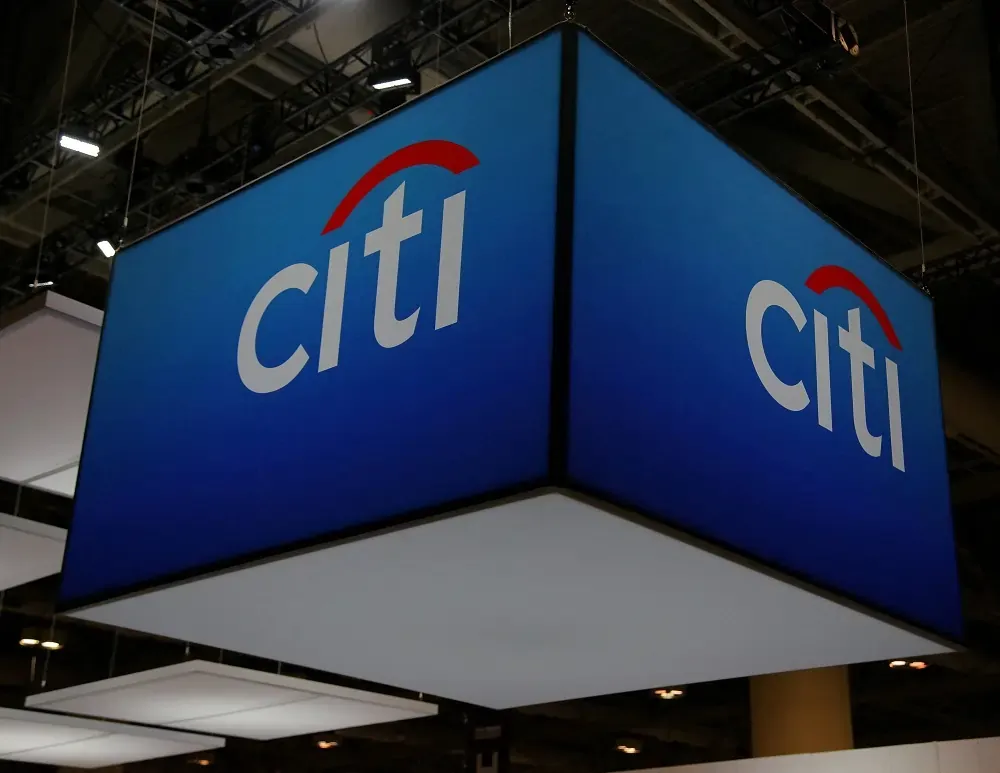
By Tatiana Bautzer and Manya Saini
(Reuters) -Citigroup beat Wall Street expectations for second-quarter profit on Friday, boosted by a jump in investment banking, markets and services revenue, but shares fell 2% amid investor worries about expenses, dividends and market share.
The third largest U.S. lender reported a profit of $1.52 per share in the three months ended June 30, above analysts’ expectations of $1.39, according to LSEG data.
Citi had a 7.2% shareholder return in the second quarter, far from its target of 11% to 12%, said Warren Kornfeld, senior vice president in the financial institutions group at Moody’s Ratings.
“The results again reflect the services sector’s strength. But Citi has challenges in broadening market share and reducing expenses in its other segments.”
The stronger results come two days after U.S. regulators fined Citi $136 million for making “insufficient progress” in fixing data management problems identified in 2020. Regulators also required the lender to demonstrate it was putting enough resources toward those efforts.
During a conference call with analysts, Citigroup CEO Jane Fraser and Chief Financial Officer Mark Mason fielded extensive questions about the bank’s share buyback and dividend plans in the context of Citi’s regulatory problems. The bank announced potential acquisitions of up to $1 billion in stock over the next quarter and Fraser said regulators did not cap dividend payments to shareholders.
The bank’s plan to allocate resources to regulatory fixes has not yet been agreed with regulators, Mason and Fraser said. In areas where regulatory work looks like it could face delays, Citi will determine root causes and decide whether more technology spending, additional applications or platform adjustments, or more employees are needed, Mason added.
Mason and Fraser explained the bank’s problems with the quality of its data and added Citi has unified many systems that collect data for regulatory reporting. But more work is needed to ensure reports that use thousands of data points have good quality data, without needing manual checks from employees. The CFO also said priority is being given to the regulatory reports that are more important to U.S. regulators.
Jane Fraser is carrying out a sweeping overhaul in an effort to improve the bank’s performance, cut costs and simplify its sprawling businesses. As part of the turnaround, Citi aims to shrink its workforce by 20,000 over the next two years.
Revenue in the second quarter came in at $20.1 billion, up 4% from a year earlier, buoyed by a $400 million gain from the conversion and partial sale of Visa stock in May.
Citi now breaks out earnings individually for its five businesses — services, markets, banking, U.S. personal banking and wealth, which were previously housed under broader divisions.
Investment banking fees jumped 60% in the second quarter to $853 million. The surge comes as a prolonged industry-wide slump in deals finally shows signs of a meaningful recovery. The gains fueled a 38% climb in broader revenue for the banking division to $1.6 billion, which also includes corporate lending.
“We see continued strong debt issuance this quarter, good M&A, the IPO market has shown a glimpse of revival and the pipeline … is quite strong,” Mason said on the call. “M&A will potentially play a larger role in the mix in the back half of the year.”
Citi hired JPMorgan Chase veteran Viswas Raghavan as head of banking earlier this year to revitalize the division catering to multinational corporations.
Services revenue increased 3% to $4.7 billion. The unit houses Citi’s treasury and trade solutions business, which the company touts as its crown jewel. Fraser and other leaders highlighted their strategy for the services business at an investor day last month.
Markets revenue climbed 6% to $5.1 billion, lifted by a 37% jump in equities trading revenue.
EXPENSES ON TOP OF GUIDANCE
Operating expenses fell 2% to $13.4 billion in the quarter as the bank saved money from the reorganization that simplified its structure. Citi expects full-year expenses to be at the high end of its previously forecast range of $53.5 billion to $53.8 billion, excluding fines from regulators received by the bank this year, Mason said.
Rival JPMorgan Chase reported a rise in second-quarter profit on Friday, while Wells Fargo’s net income declined and it missed estimates for interest income.
Citi’s wealth management division, a key part of Fraser’s growth strategy, has yet to grow significantly, with revenue up 2% this quarter to $1.8 billion.
The lender’s U.S. personal banking revenue grew 6%, reaching $4.9 billion, mainly due to growth in branded cards.
Analysts have called 2024 a transitional year for Citi as it becomes leaner under Fraser’s turnaround.
Investors have also cheered the efforts and rewarded Fraser with a 28% jump in the bank’s stock this year, far outperforming closest rivals JPMorgan and Bank of America, as well as the broader equity markets.
(Reporting by Tatiana Bautzer in New York and Manya Saini in Bengaluru; Editing by Lananh Nguyen, Shounak Dasgupta and Nick Zieminski)


